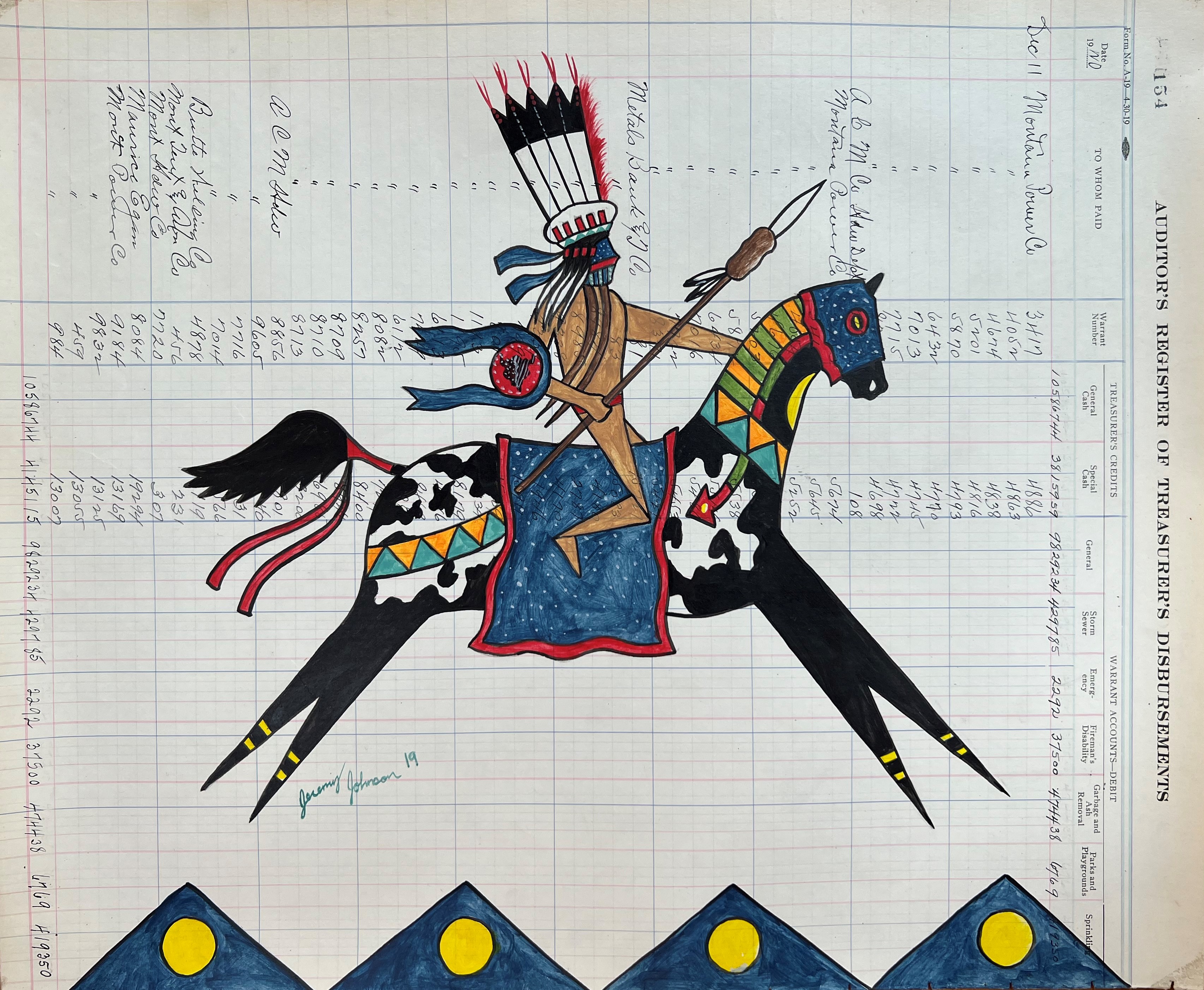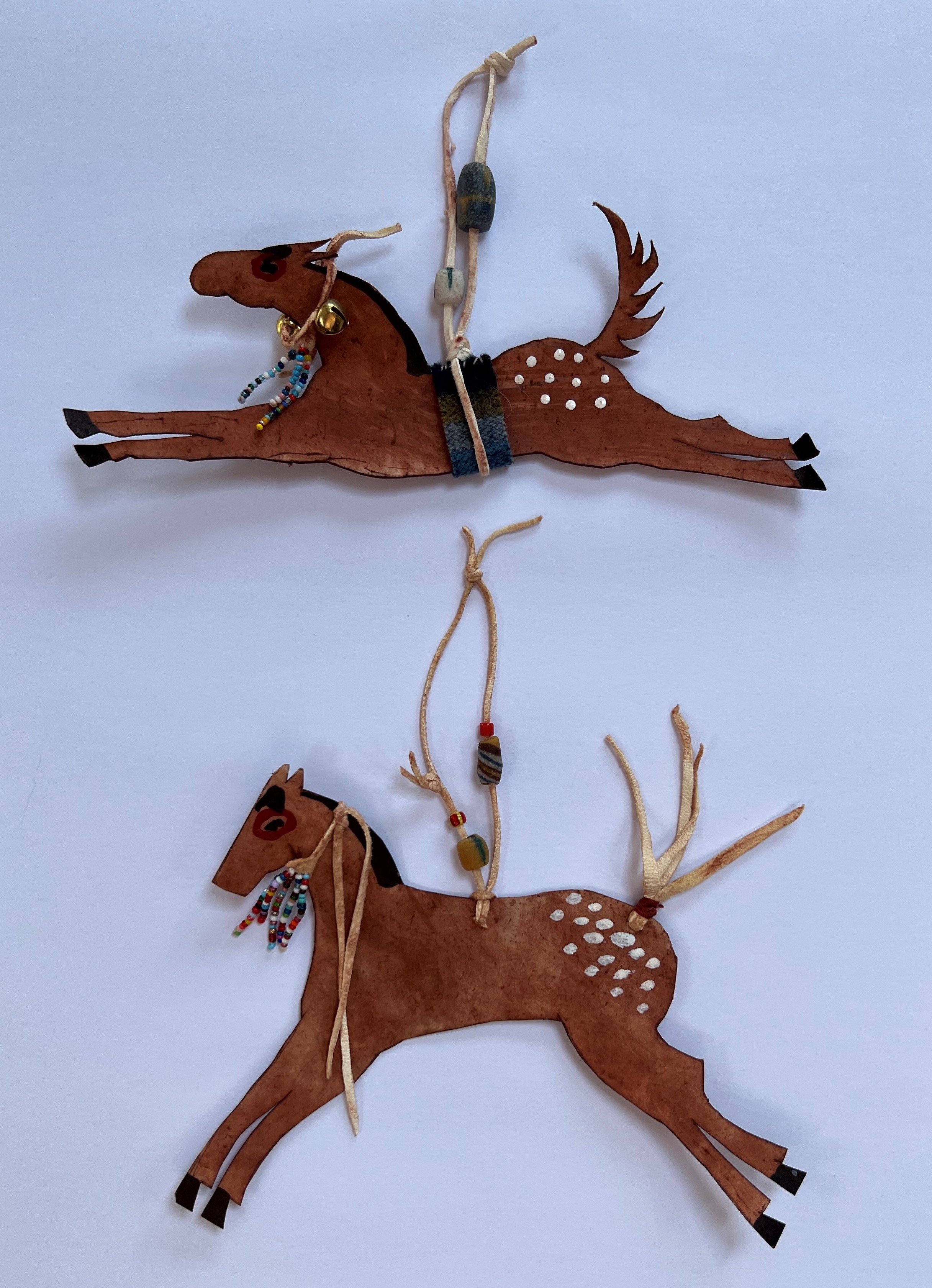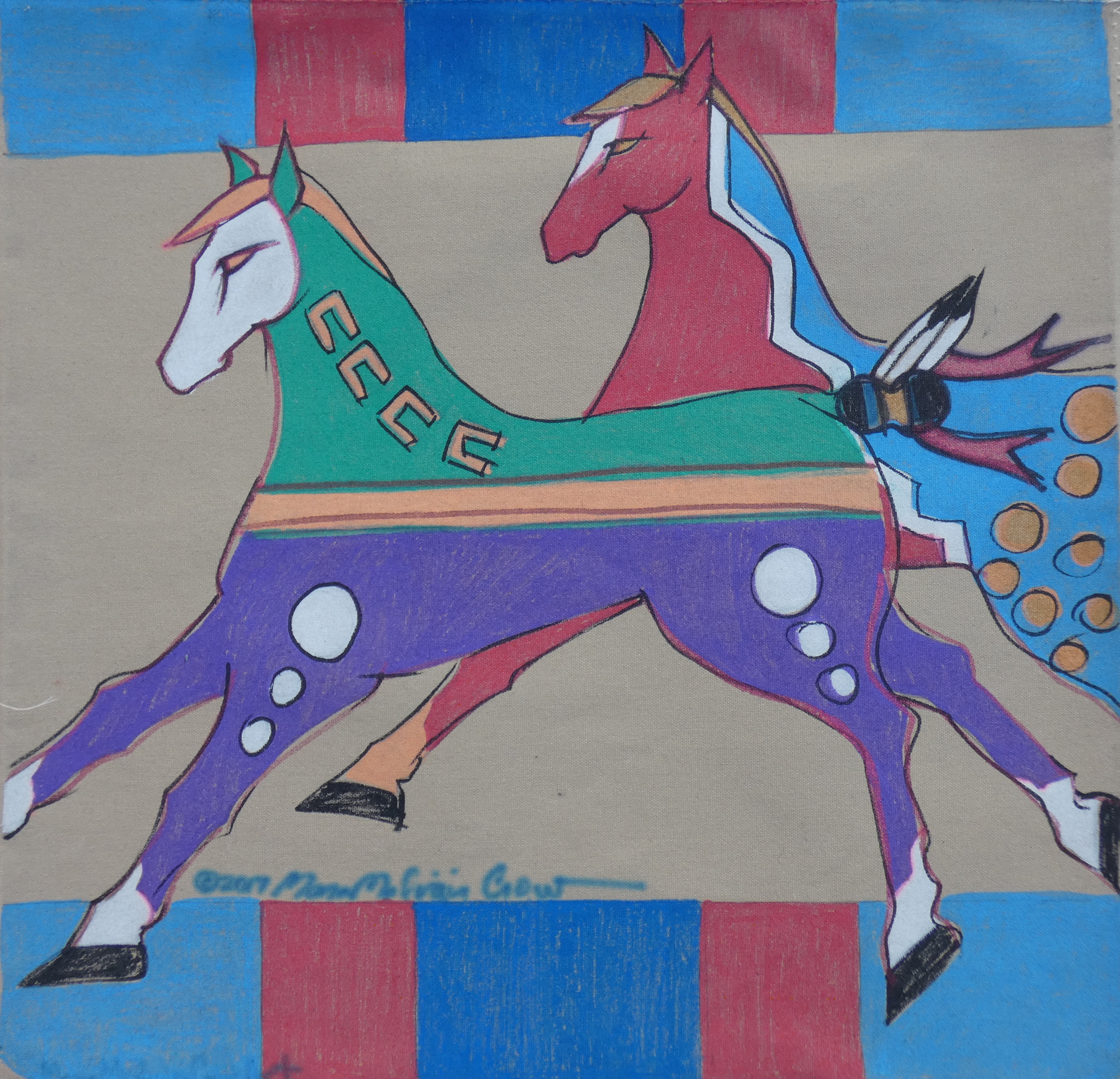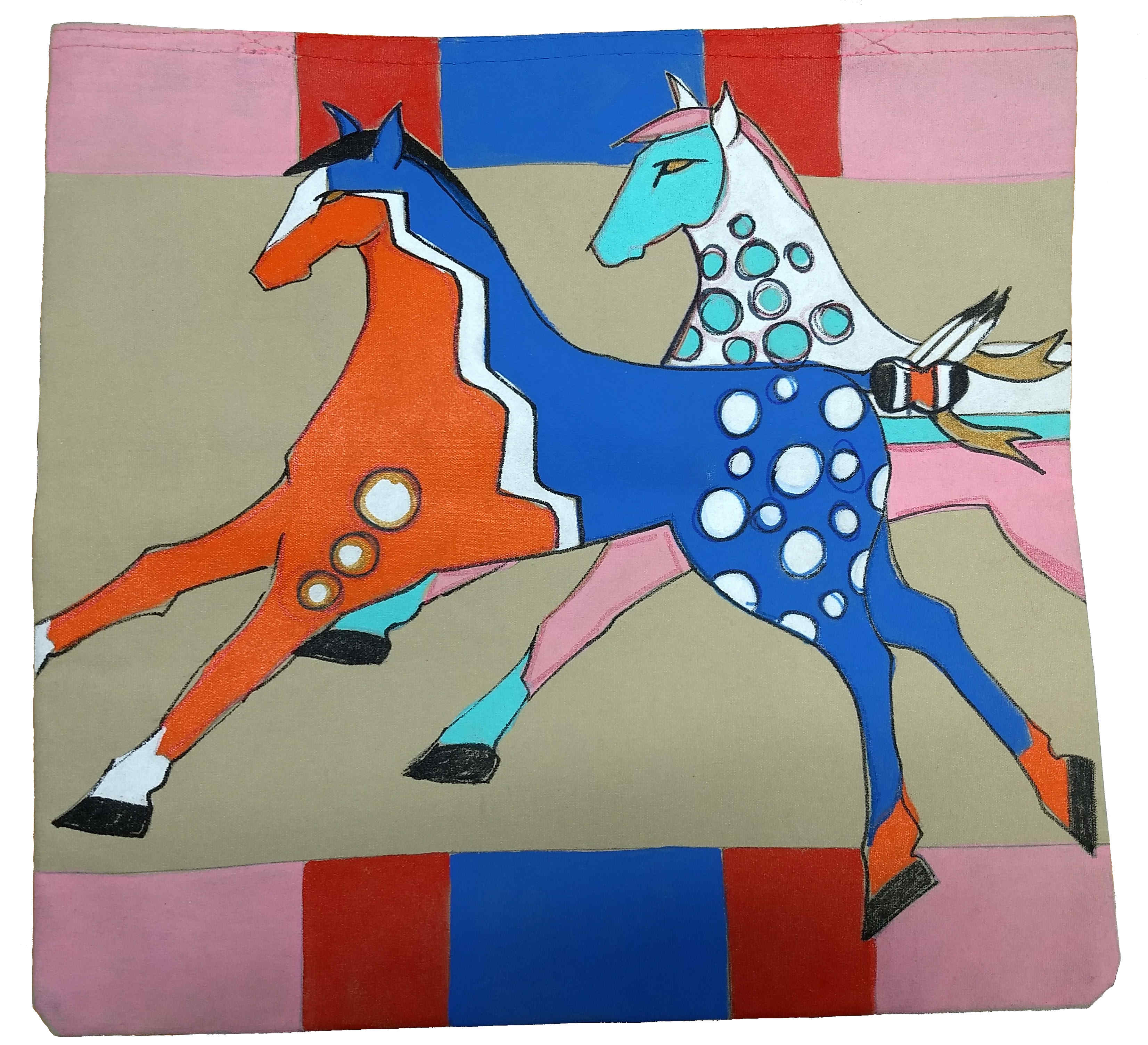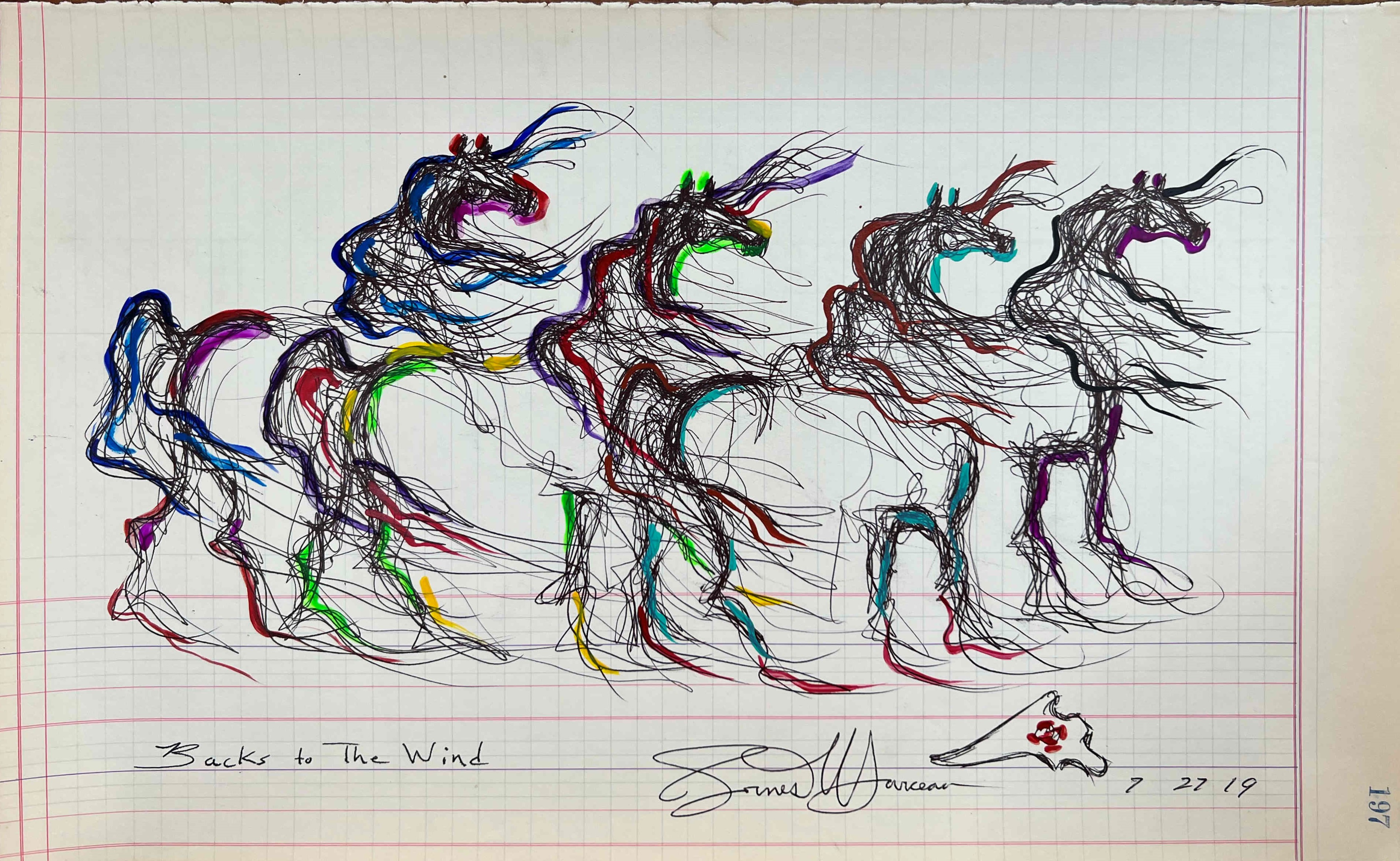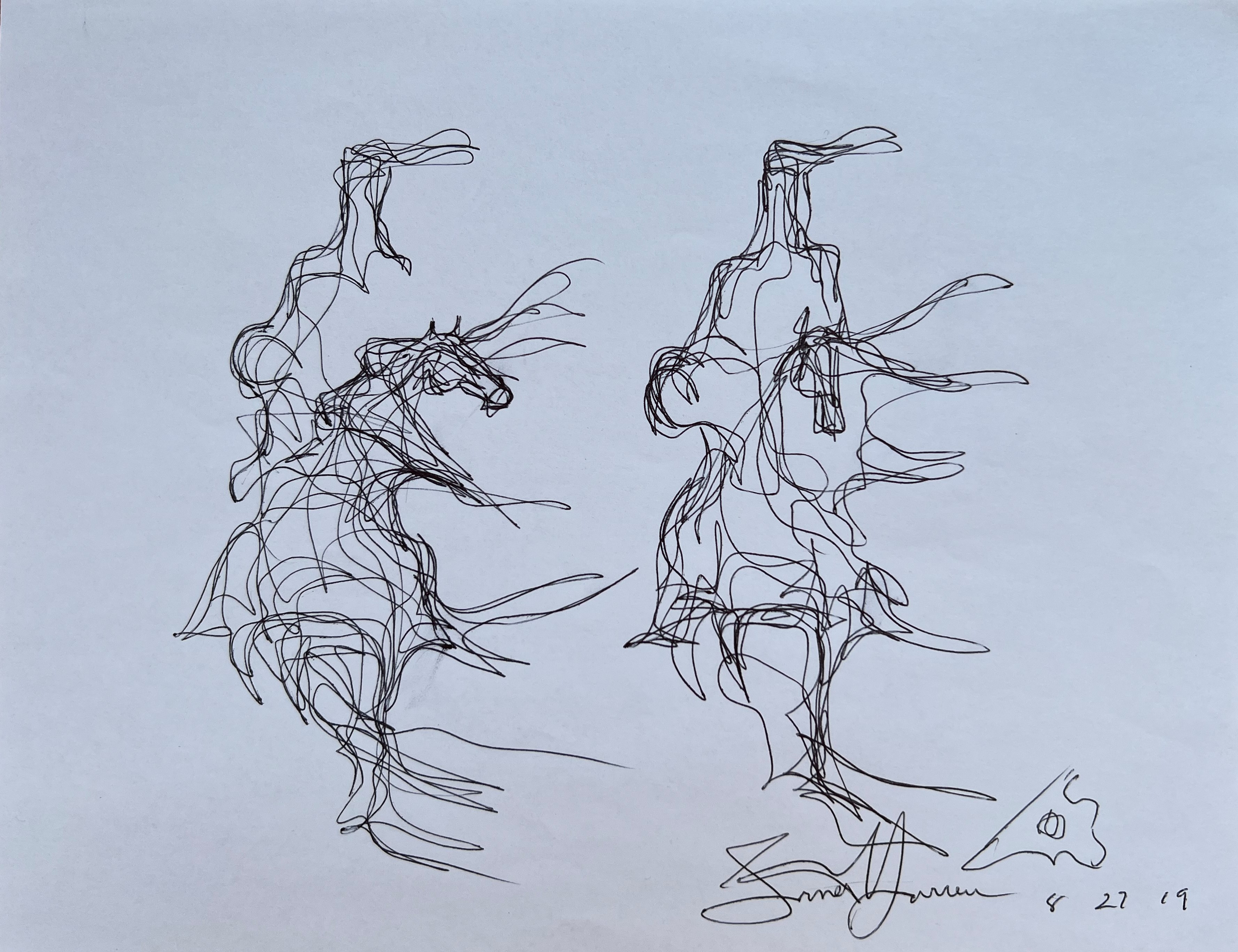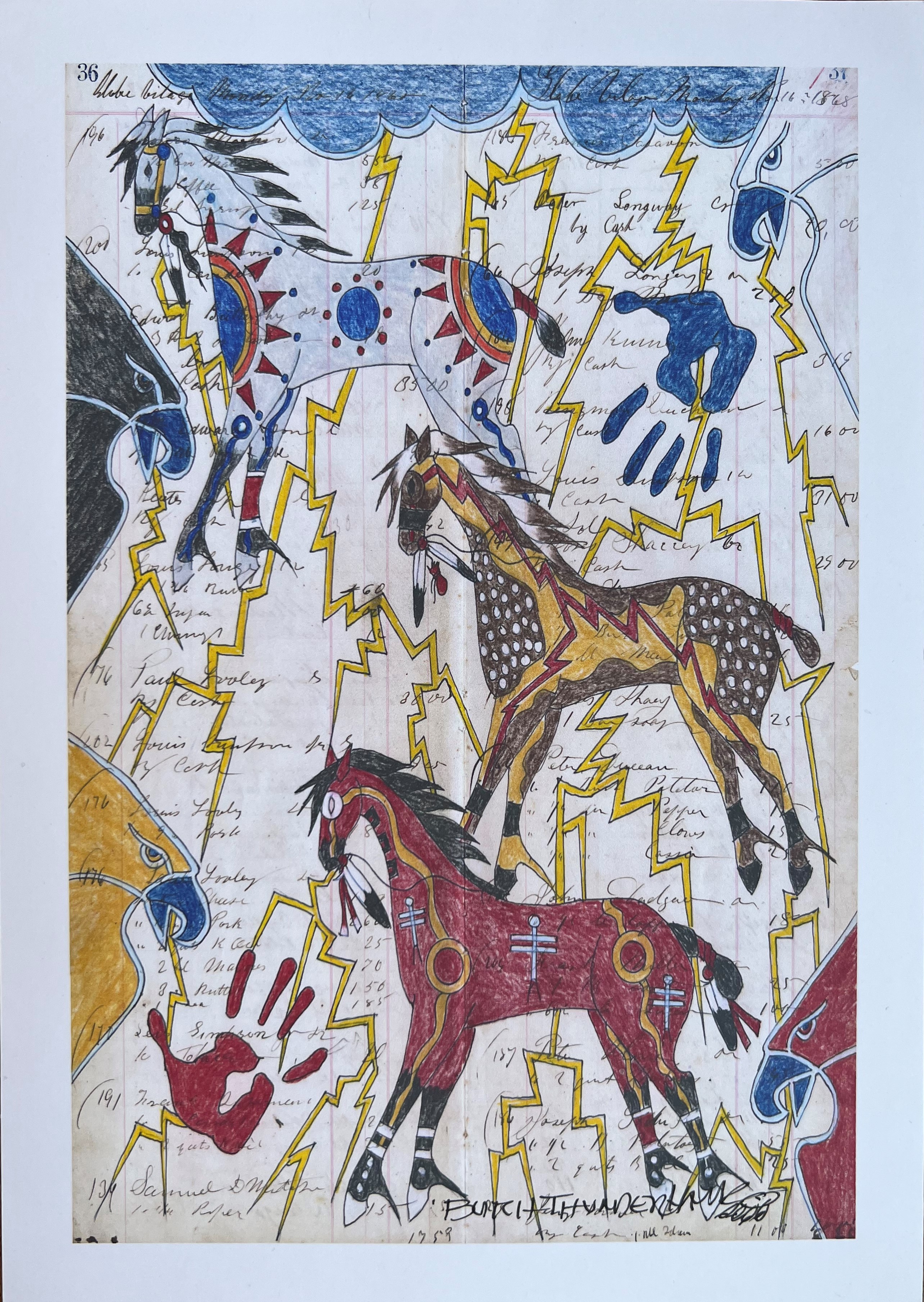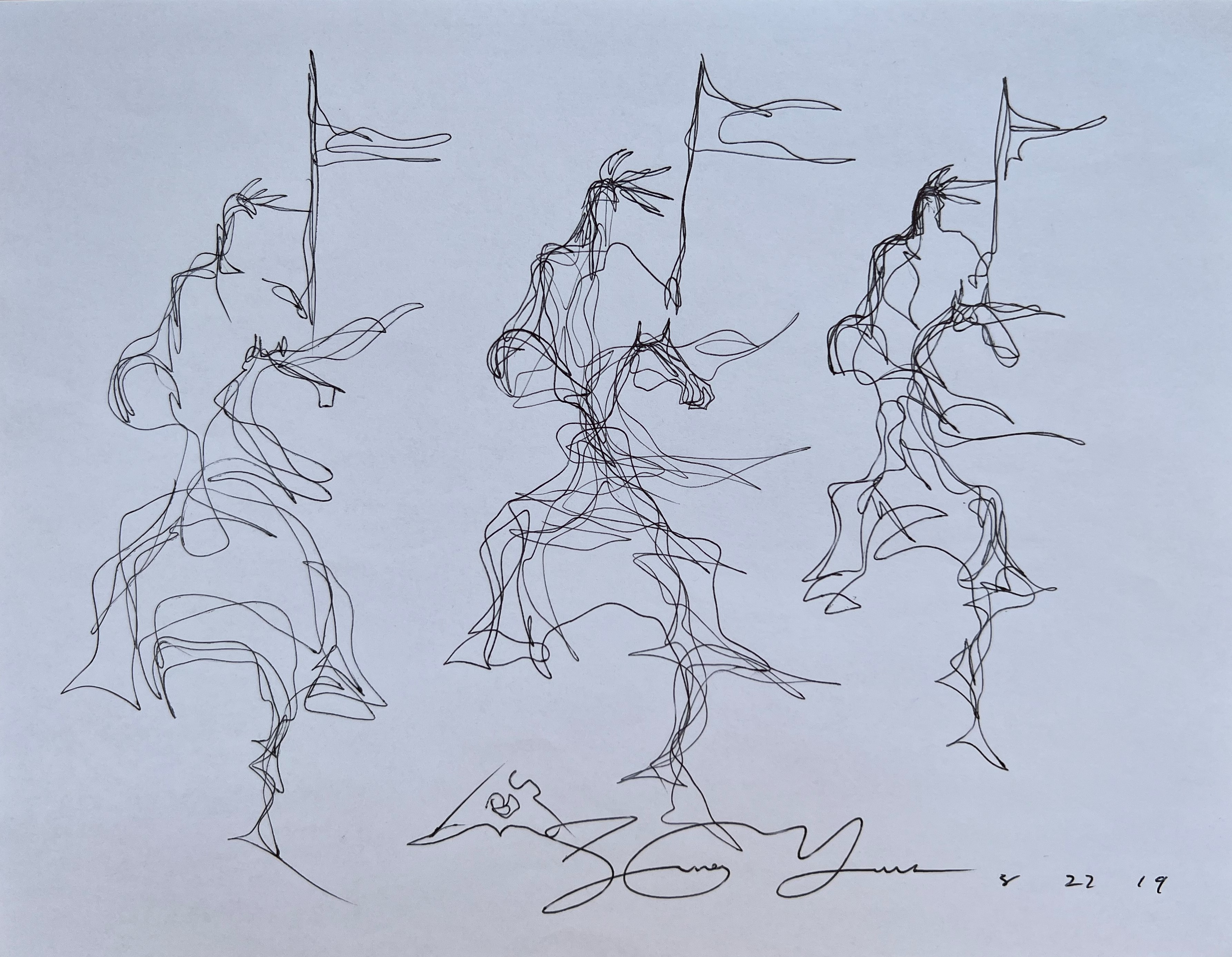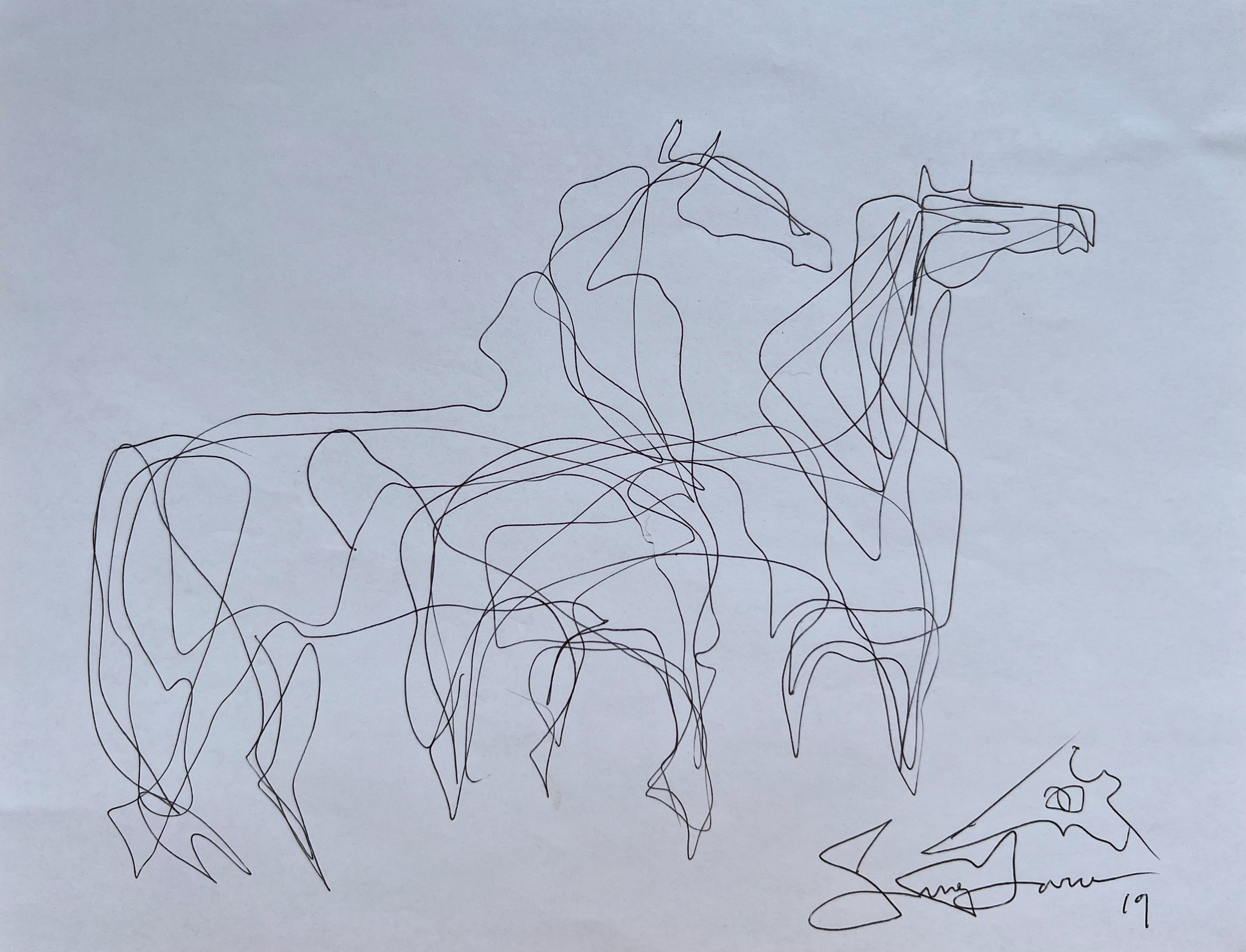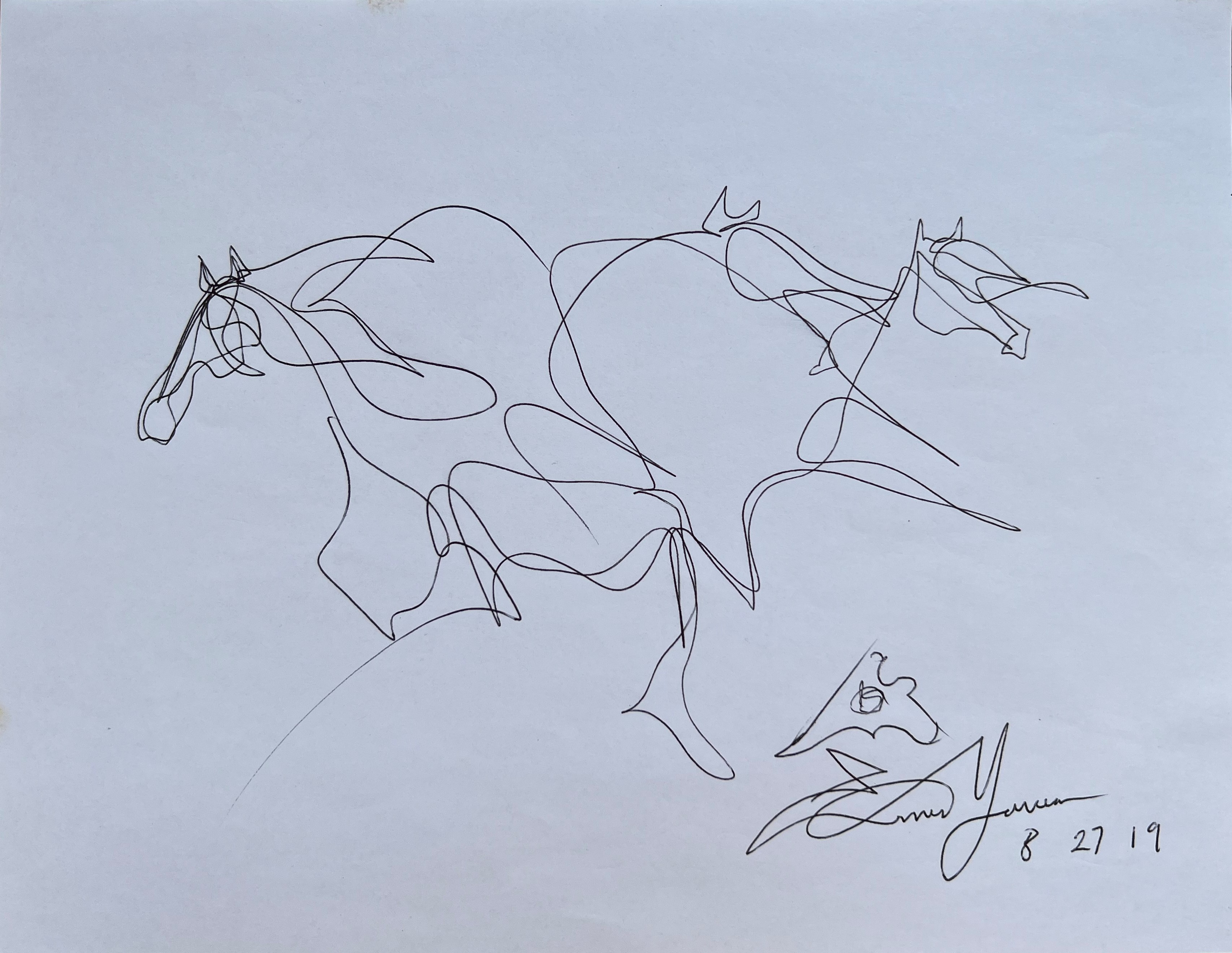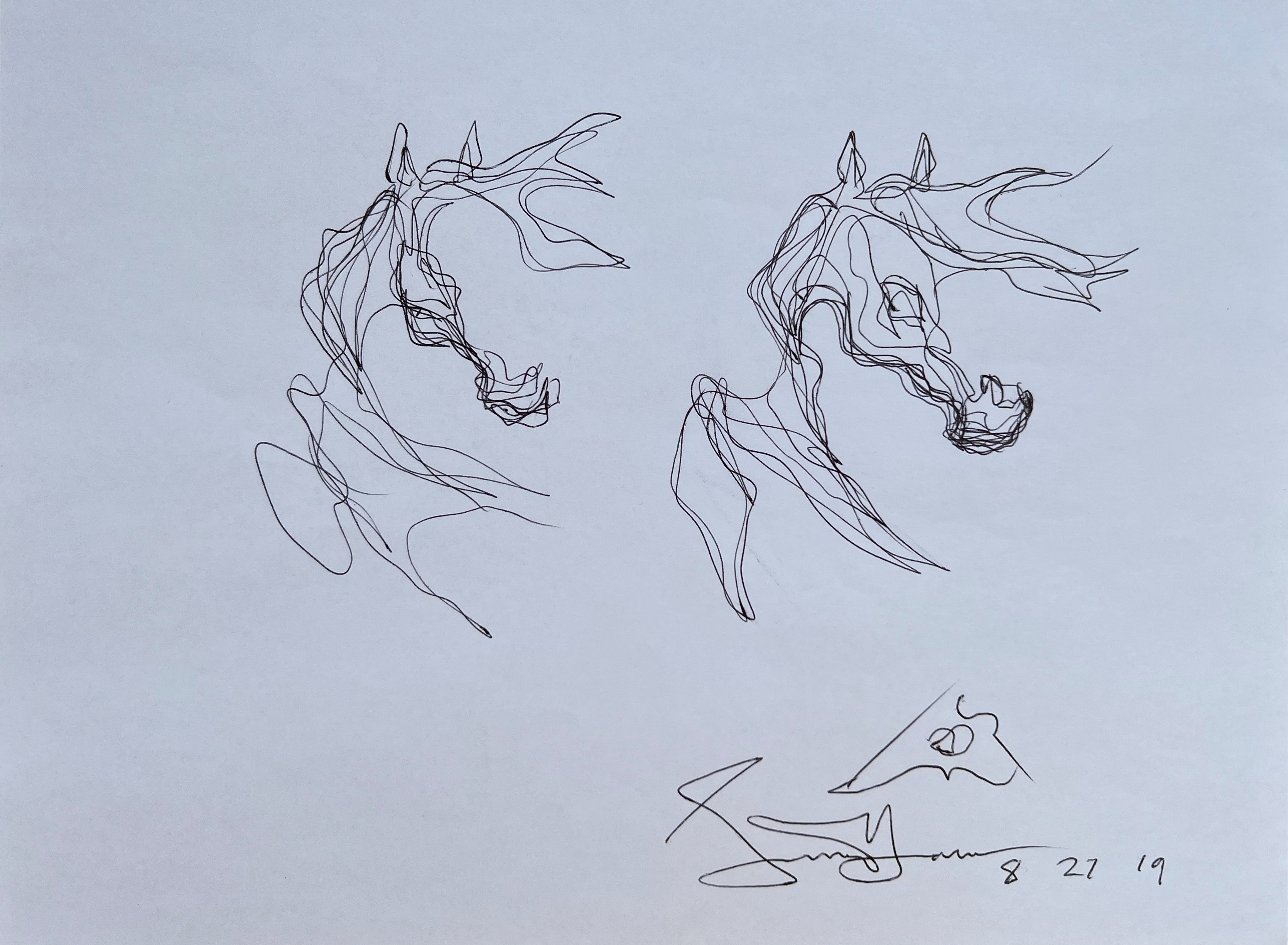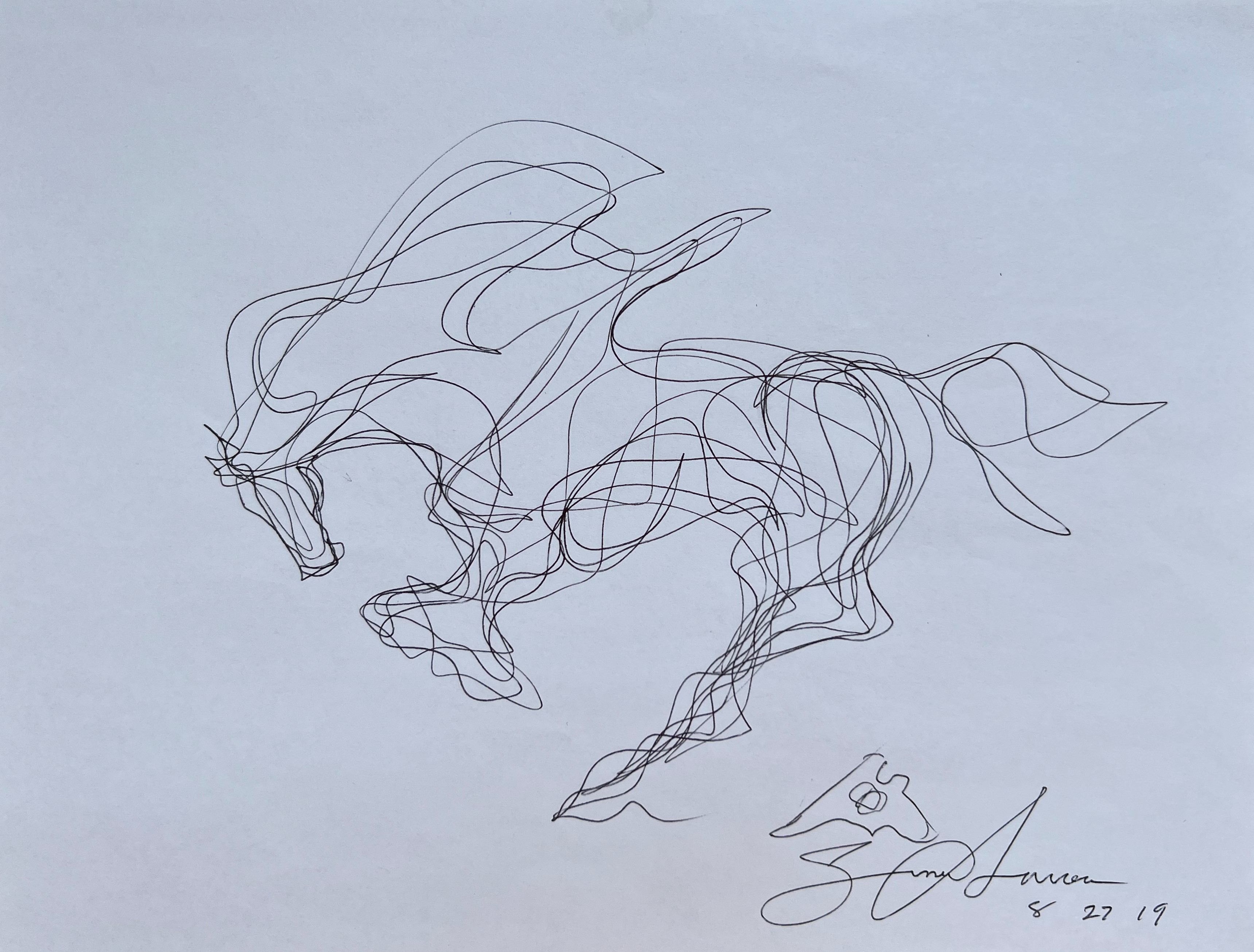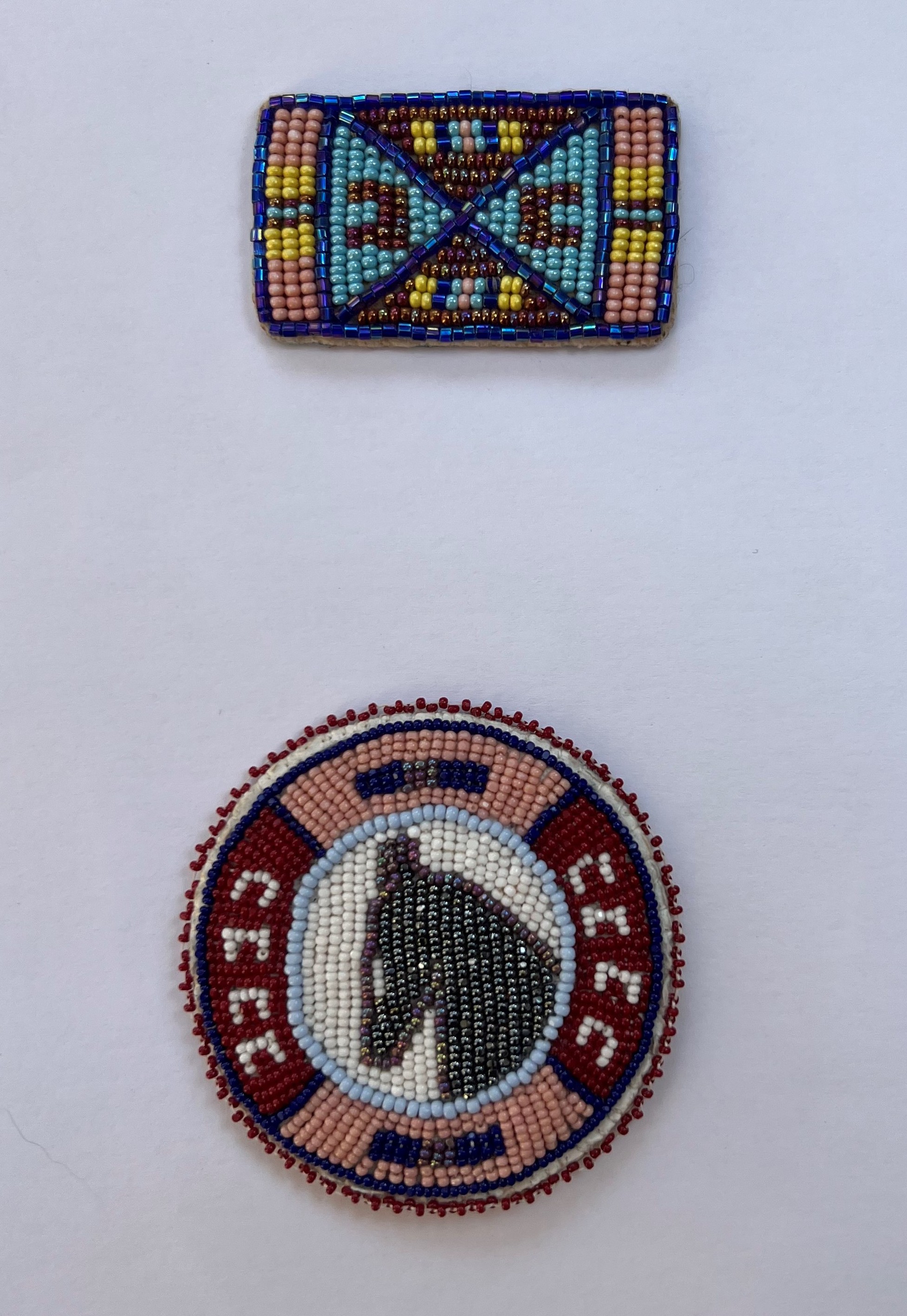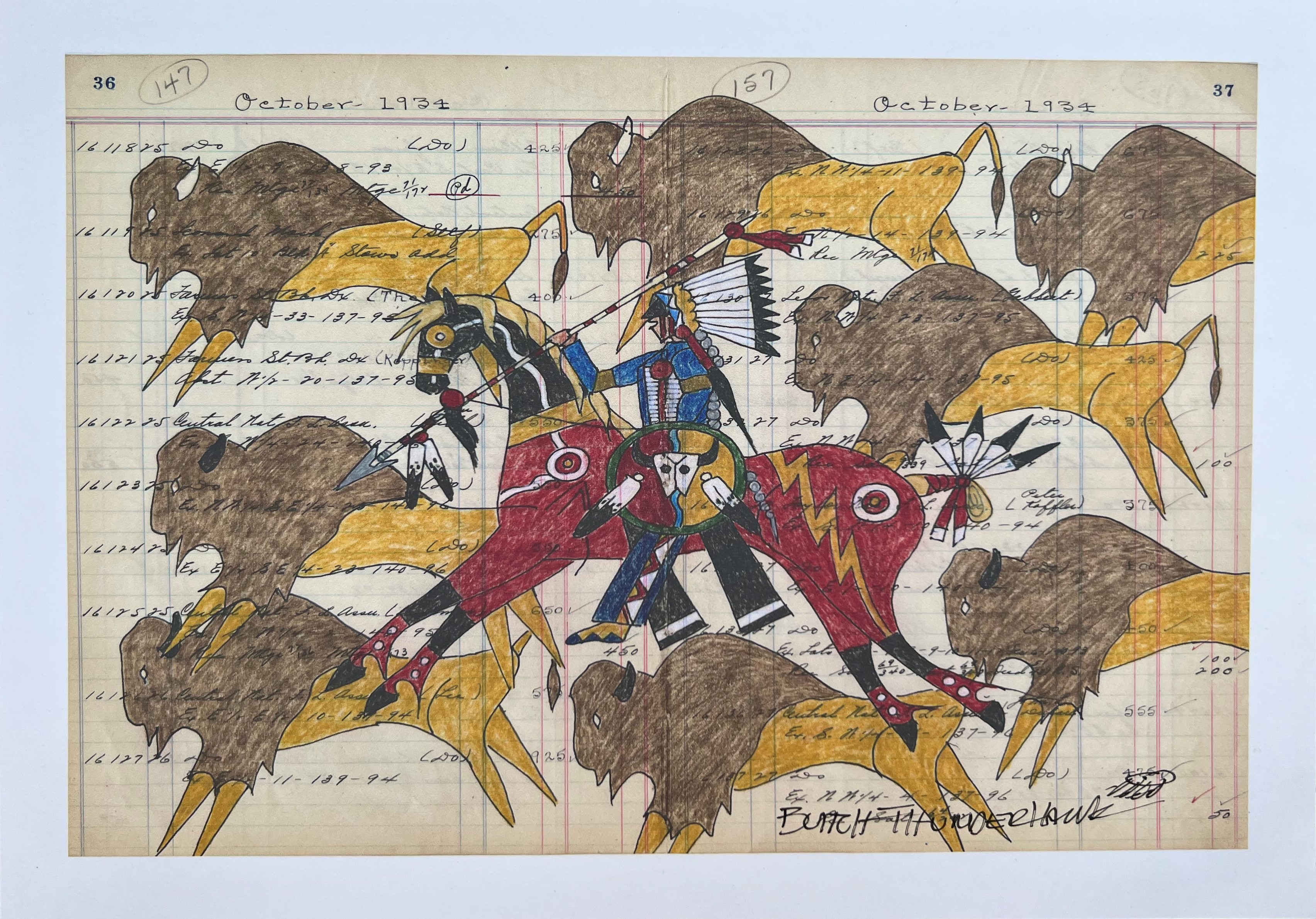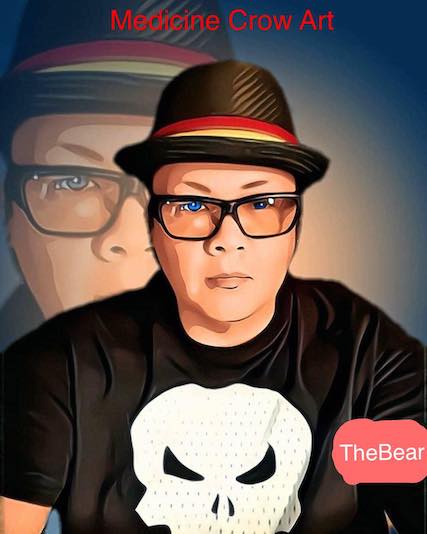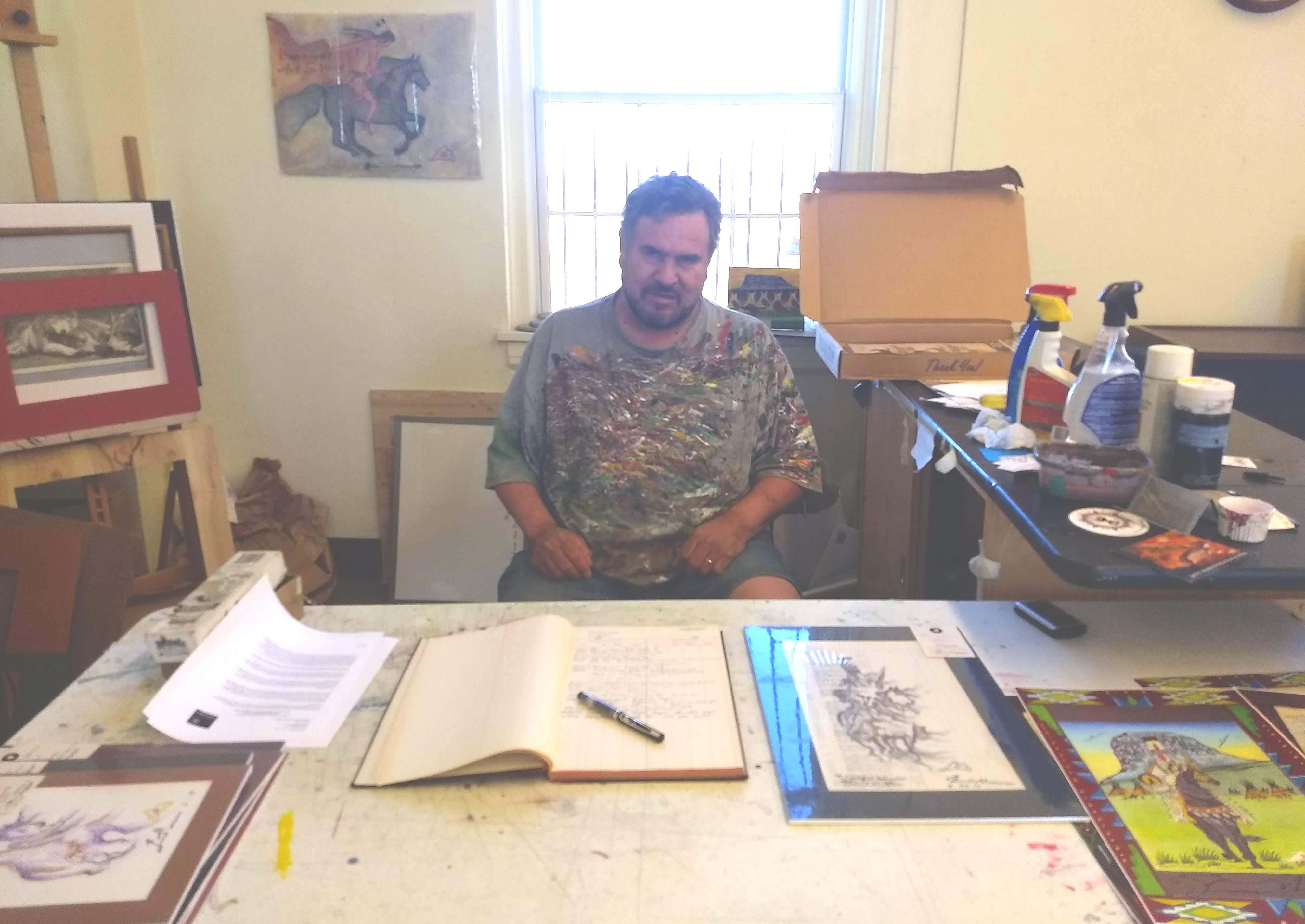Introduction to the exhibition
The horses in this exhibition are evoked through various processes, be it with vibrant colours, meticulous detail or the freedom of a single line. This variety illustrates not only the creativity and skill of the artists, but also the diversity of roles which horses have played in peoples’ lives, both in the past and today. The contemporary artists featured in this exhibition share a common sense of the importance of the horse in Native life, and of the horse’s own power, beauty, and symbolic and spiritual significance.
For centuries the Apsáalooke (Crow), Pikuni (Blackfeet) and Lakota (western Sioux) Nations have extended their influence beyond their current geographical locations within Montana, North Dakota and South Dakota. Today they are still known for their horsemanship as well as their distinctive art. Here the bold colours and ledger-style horses of Mona Bear Medicine Crow, Butch ThunderHawk and Jeremy Johnson contrast with the evocative lines and emotive scenes of Ernest Marceau and Earl Biss. The works of Birdie Real Bird and an unknown beader require contemplation on the intricacies of their art, and reflection on the materiality of human- animal relations.
Domestic horses galloped into the lives of the Indigenous people of the Northern Plains in the first half of the eighteenth century, having been shipped to the continent by the Spanish, and dispersed through Native uprisings and pre-established trade routes from the South. Plains tribes were quick to adopt horses and the myriad advantages they brought, and the horse soon became a major catalyst for change within these communities. The move to mounted warfare and hunting influenced social and political structures, while the use of horses for travel increased the distance and speed of movement within a nomadic lifestyle.
Horses have been documented in art since their earliest interactions with Plains communities. These creative expressions often illuminate how horses became woven into the makers’ cultural and spiritual lives. Horses were incorporated into pre-existing artistic traditions, such as quillwork, beading and parfleche designs, as well as inspiring new traditions, such as the decorative horse regalia which still plays a significant role in Plains - especially Crow - culture today. Ledger drawing, which was developed during the Reservation Period, displays the continuation of an important source of Native historical documentation.
This exhibition is the online version of the show currently on display in Oxford, UK. Address: Rothermere American Institute, 1a South Parks Road, Oxford, OX1 3UB. See Contact.




